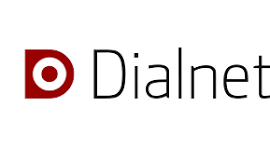System multi-line to control and execution of survey by telephone
Keywords:
Multiline System, programming multitasking, First-Party, TAPI, databaseAbstract
The Multiline System for monitoring and enforcement of Surveys via telephone, was developed in the programming language Microsoft Visual C++
6.0 and in the development tool of applications of database Clarion 6.1, under the environment of Windows XP operating system, using the technique of multitasking programming based on threads. The architecture system hardware, is the model of direct access First-Party, this means that the PC is connected to a telephone device, a phone card Dialogic D/4PCI in our case, and that it, in turn, contains internally audio devices input/output, connected to some channels that come from a public lines.. The functions TAPI-DIALOGIC allow to control the telephone devices of the Card Dialogic D/4PCI on transmitting information, while the last two control devices audio input/output, necessary to pass. The system can control and run at the same time or simultaneously several surveys of different sizes, based on the number of questions, through access to a database of surveys. The System expected calls, which, to occur the event ring of telephone, answers automatically, initiating a interaction of dialog with the person who calls, bringing a series of questions, through voice messages previously recorded, and storing automatically the responses of the person surveyed, as files of voice messages or tones multi-frequencies, directly in the database.
References
Casas, A., (1997) Sistema telefónico multilínea con reconocimiento de voz y acceso a base de datos remota. Proyecto Fin de Carrera. Grupo de Tecnología del Habla. DIE. UPM. Madrid, 1997.
Córdoba R., (1995). Sistemas de reconocimiento de habla continua y aislada: comparación y optimización de los sistemas de modelado y parametrización. Tesis Doctoral. Grupo de Tecnología del Habla. DIE. UPM. Madrid.
Datasheet, (2000). Especificaciones Técnicas de la Tarjeta de Telefonía Intel Dialogic D/4PCI.
Dialogic Corporation. Voice Software Reference, Programmer’s Guide for Windows. Copyright © 2001
Jordà S. (1997). Audio digital y MIDI, Guías Monográficas. Anaya Multimedia. España-Madrid.
Martín, F., (2002). Desarrollo de una Familia de Aplicaciones CTI (Computer Telephony Integration). Documento disponible en http://wgpi.tsc.uvigo.es/~fmartin/CursoCTI/Material.html.
Microsoft Corporation (1999). TAPI 3.0 Connection and Media Services.
Microsoft Corporation. Telephony Application Programming Interface (TAPI) Programmer's Reference. 1996.
Novell Corporation (1998). Netware Telephony Services Application Programming Interface (TSAPI), Version 2.
San-Segundo, R. (1997). “Optimización de un sistema de reconocimiento de habla aislada por teléfono sobre un computador compatible (PC)”. Proyecto Fin de Carrera. Grupo de Tecnología del Habla. DIE. UPM. Madrid.
Softvelocity Incorporated. ABC Library Reference. CopyRight 1994-2003
Softvelocity Incorporated. Advanced Topics and Reference Guide. CopyRight 1994-2003
Softvelocity Incorporated. Clarion for Windows Tips, A Simple Voice Recording Application Using MCI. October 1996
Softvelocity Incorporated. Clarion Language Programming Guide. CopyRight 1994-2003
Softvelocity Incorporated. Cooperative Threading in a Preemtive Enviroment. CopyRight 1994-2003.
Softvelocity Incorporated. Faq, Tips and Tricks. CopyRight 1994- 2003
Softvelocity Incorporated. Interfacing Clarion 32-bit DLLs with Visual Basic or C++. Copyright 2002.
Softvelocity Incorporated. Language Reference Manual. CopyRight 1994-2003
Softvelocity Incorporated. Linking C Source Code into applications. Copyright 2001.
Softvelocity Incorporated. Multi-Threaded Programming Guide. CopyRight 1994-2003
Softvelocity Incorporated. Preemtive and Cooperative Thread Models. CopyRight 1994-2003
Tanembaum, A., (1991). Redes de Computadores. Editorial Prentice Hall.
Downloads
Published
How to Cite
Issue
Section
License
Copyright (c) 2011 Manuel R. Contreras C, José Luciano Maldonado

This work is licensed under a Creative Commons Attribution 4.0 International License.








